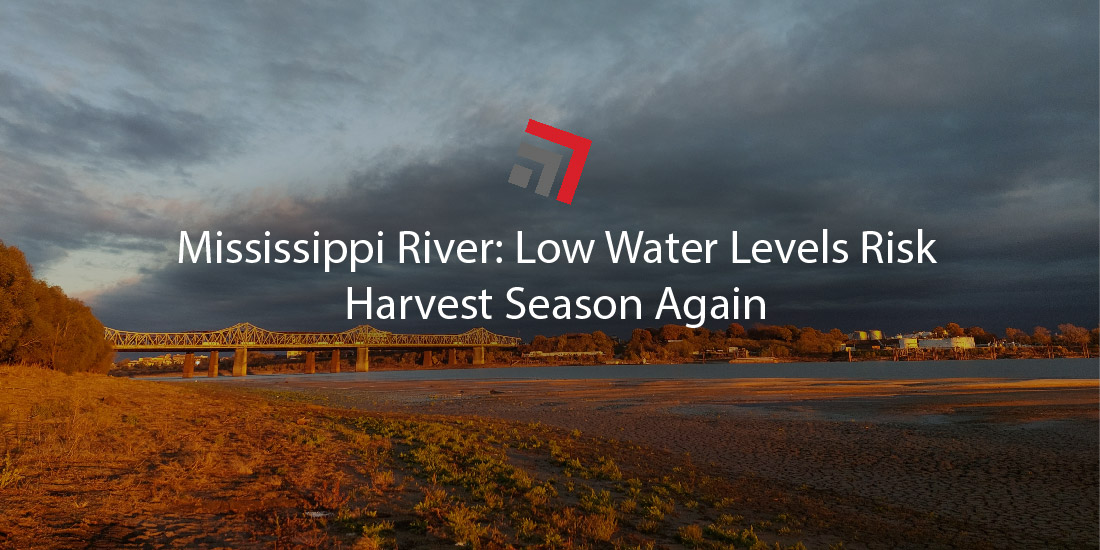Mischief from Mother Nature is inevitable, however for it to repeat its wrath two years in a row is devastating.
For the second consecutive year, the Mississippi River has pruned after months of abnormally dry and hot weather. Barge traffic is once again negotiating low water levels on this crucial inland waterway, posing significant risks to America’s crop exports.
Low water levels again squeeze barge traffic
Parallel to last year’s situation, the timing of the river’s diminished condition couldn’t be worse. Harvest season—the country’s Super Bowl for agricultural output—is in full swing which means demand is at its highest for downbound barges.
Crop exporters rely on river barges as a cost-effective way to move their bulk. By any measure, the Mississippi River is the most competitive trade lane to move heaping volumes of soybeans and grain from Midwest farms to Gulf Coast ports where they’ll be sent off to international markets.
However, the river’s deteriorated state has prompted barge operators to run lighter loads to compensate for the lack of water. On top of this, barge rates have surged on the Mississippi, rising as much as 61 percent week-over-week in Memphis, TN—according to the U.S. Department of Agriculture.
This market pressure has threatened to spoil America’s harvest season for another year in a row. These higher transport costs are making American crops more expensive than other country’s agriculture exports.
Brazil, who already ousted the U.S. as the world’s top corn exporter, has enjoyed a rather prosperous harvest season—a sign that the South American country will further siphon away market share.
Up to three-day delays, rates continue to climb
Shipping company American Commercial Barge Line warns shipper-customers to “expect delay to transit of 48 to 72 hours due to reduced navigable space in certain areas”.
In an October 3 briefing, ACBL reported a loss total of 16.5 boats per day (within a seven-day period) due to the river’s conditions.
The barge line continues to enforce draft and tow-size restrictions.
As of September 26, the U.S. Department of Agriculture reported that downbound grain barge rates from Memphis were at $1,689. Compared to a week prior (September 19), they were $1,033.
Final Thoughts
Last year, tough decisions had to be made by desperate exporters. With the Lower Mississippi not returning to normal levels until early December, many of them had to truck or rail their loads instead. These alternative modes are much costlier than traditional barges, thus not an ideal way to move large volumes of low-value commodities.
Please contact us if you have any questions regarding this topic or any others in domestic logistics. In addition, stay up to date with weekly headlines from both trucking and rail via our Road Map newsletter.
More blogs similar to this:



Recent Comments